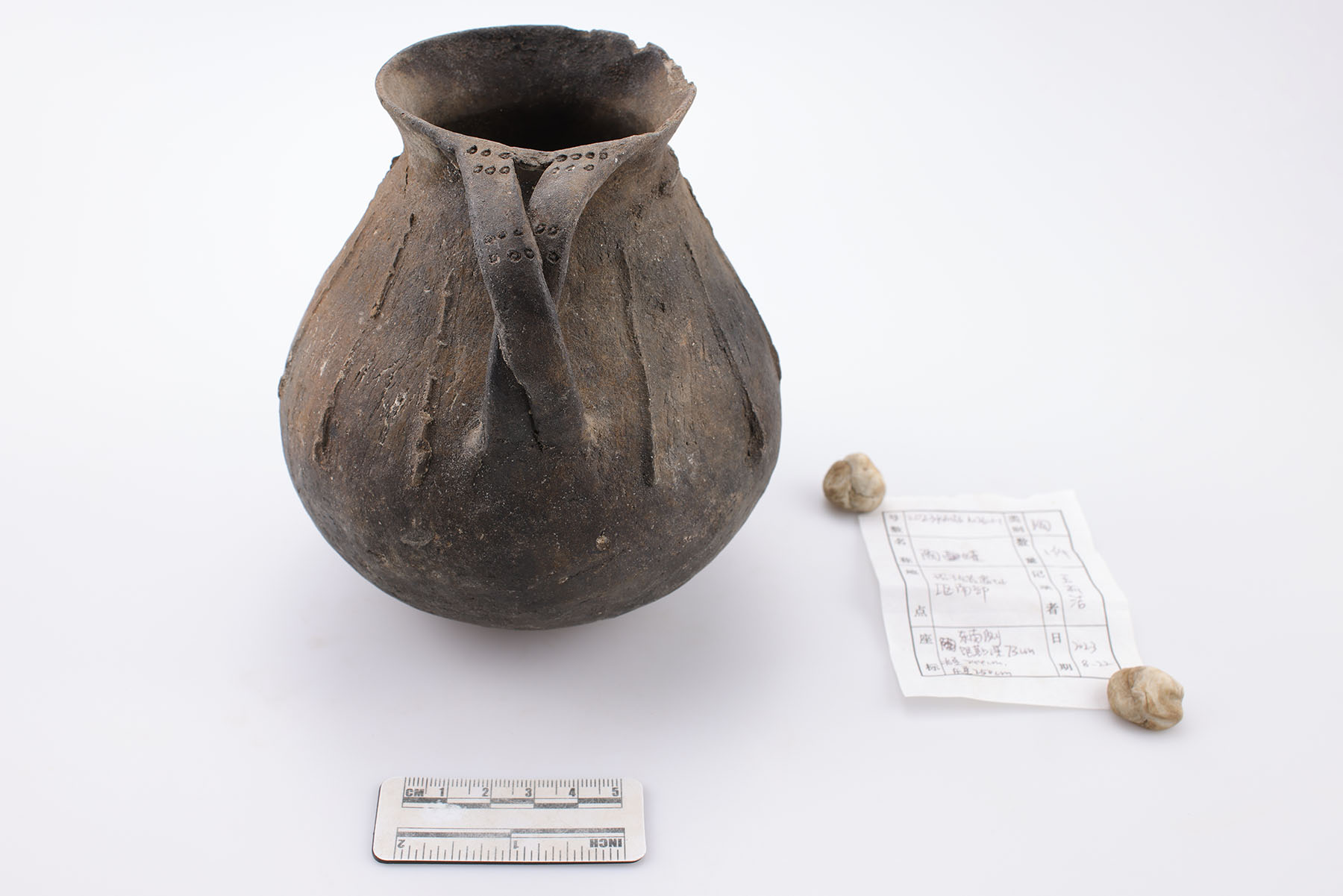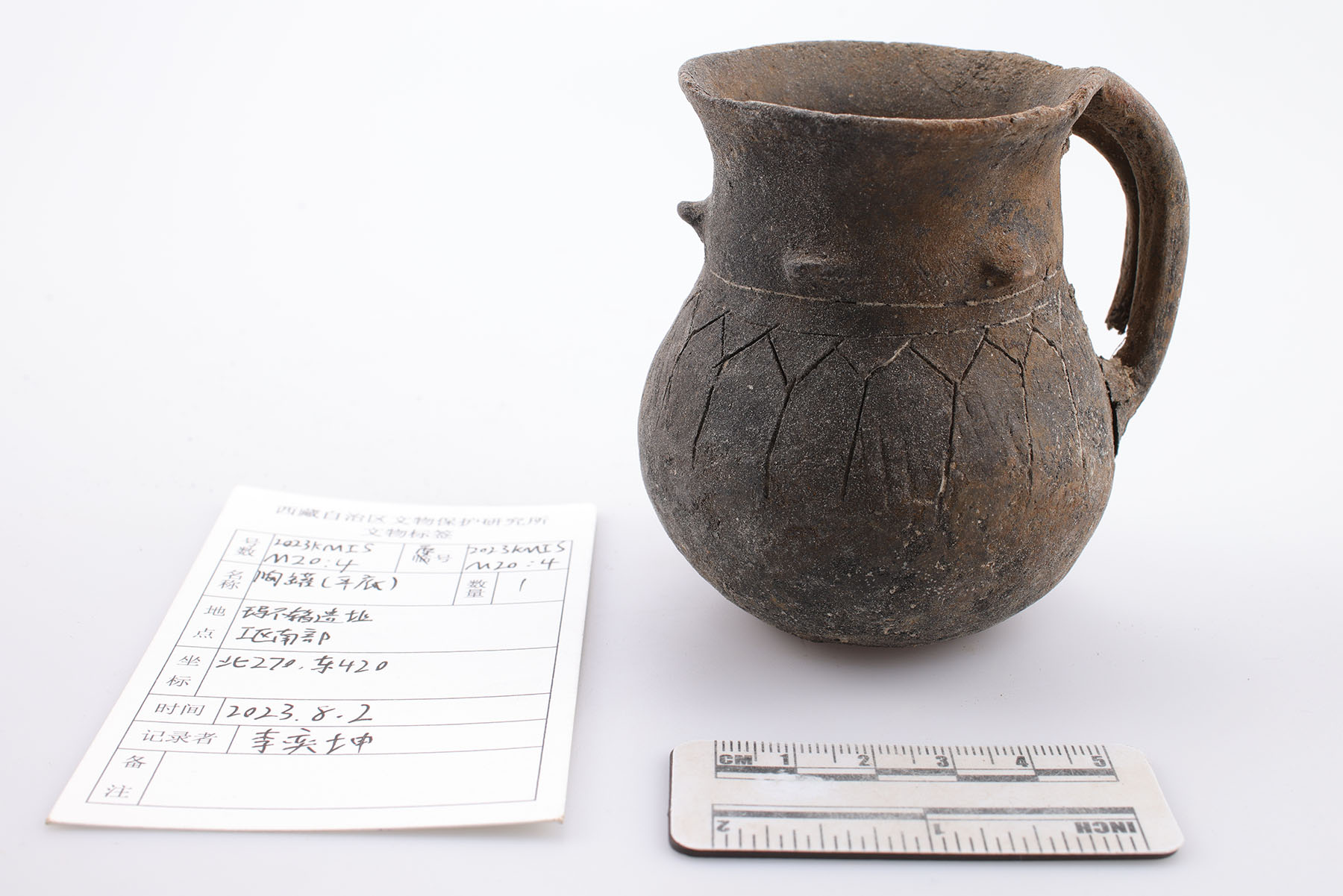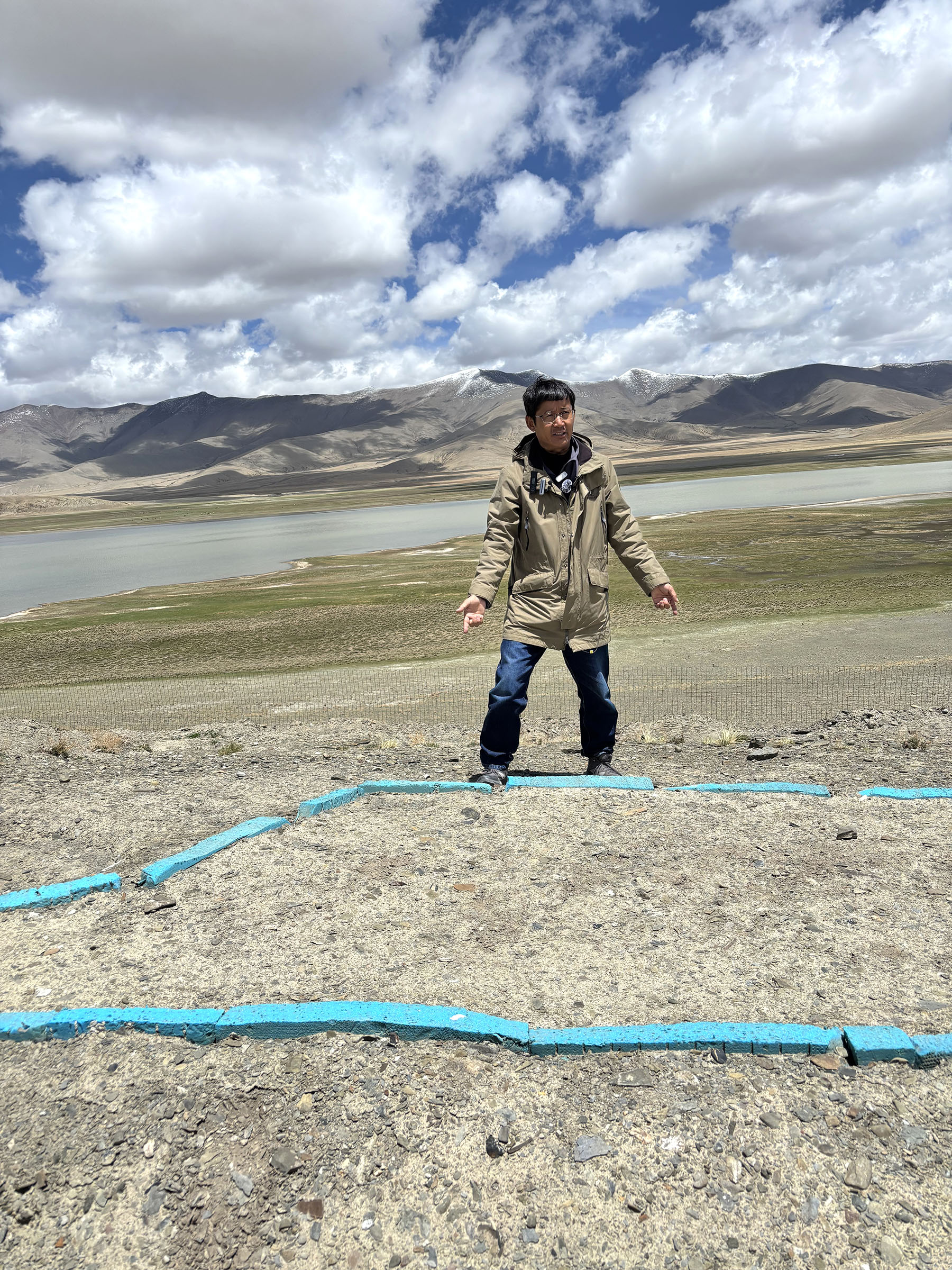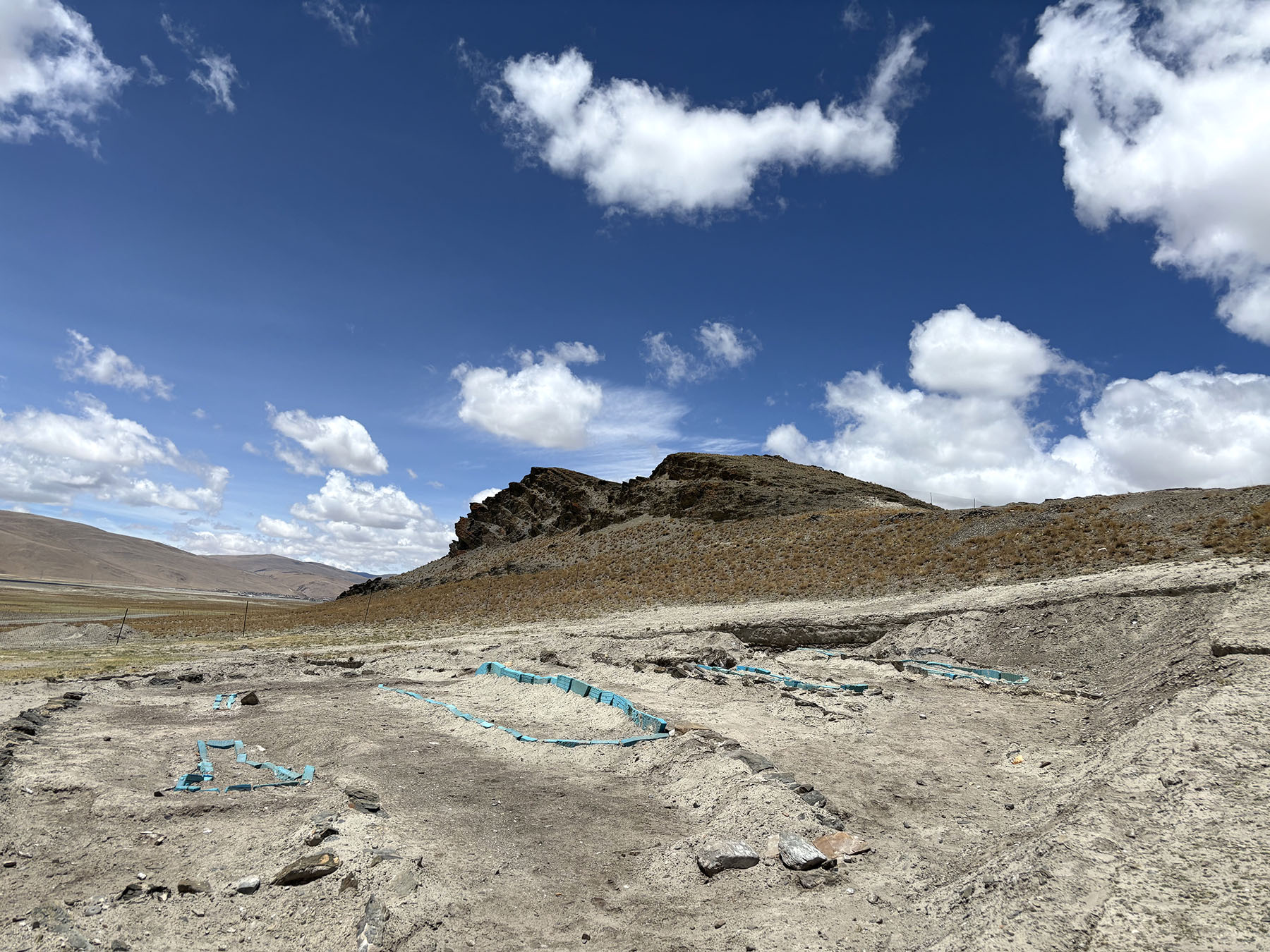Fish diet of humans thousands of years ago fascinates scientists, Palden Nyima and Daqiong report in Shigatse, Xizang.

Recent discoveries have shed fascinating light on ancient dwellers living along the Mapu Tsho Lake in Kangmar county, Shigatse, the Xizang autonomous region.
Recent archaeological findings suggest that humans living 4,000 years ago relied on fish resources from lakes to survive and thrive in extremely high-altitude environments. The site rests at an average elevation of 4,400 meters in the northern section of the central Himalayas.
According to the Institute for Cultural Relic Conservation of Xizang Autonomous Region, the Mapu Tsho heritage site has been identified as the earliest Neolithic lakeside area in the heartland of the Qinghai-Tibet Plateau with the highest altitude and longest duration.
In 2017, the Mapu Tsho heritage site was discovered by residents during a road construction project.
ALSO READ: Focusing on wild beauty
Kangmar translates to "red house" in the Tibetan language. Historically, Kangmar has been home to numerous Tibetan Buddhist monasteries and plateau lakes, with Mapu Tsho being one of them.
From the map, the lake appears as an inconspicuous small body of water, but through the excavations of archaeologists, the remains of an ancient settlement have been revealed.
Shargan Wangdue, deputy head of the Institute for Cultural Relic Conservation of the Xizang Autonomous Region, says the excavation and multidisciplinary research of the Mapu Tsho site have, for the first time, identified the "origin" of prehistoric culture in the central part of Xizang dating back 4,000 years.

Remarkable journey
Following the discovery, the second comprehensive scientific expedition to the Qinghai-Tibet Plateau took place in 2019, led by the Institute of Tibetan Plateau Research under the Chinese Academy of Sciences.
"When the multidisciplinary team was conducting a lake survey, researchers found pottery fragments and animal bones at the site," says Shargan Wangdue.
He says that based on the topography, landform and the distribution of the remains, the site can be divided into three areas, mainly spread across the southern, southeastern and northwestern shore of the lake.
The journey from discovery to excavation has been fraught with challenges and triumphs. After recognizing the significance of the site based on their initial findings, archaeologists worked on the application for a national excavation license, which they received in 2020.
From 2020 to 2024, the Institute for Cultural Relic Conservation of Xizang Autonomous Region conducted field excavations at the site for five years, in collaboration with Lanzhou University, the Qinghai-Tibet Plateau Institute of the Chinese Academy of Sciences, Peking University and the Archaeological Research Center of the National Cultural Heritage Administration.
"After conducting scientific analysis, such as radiocarbon dating, the pottery dated between 3,800 and 4,000 years old," Shargan Wangdue says.
As of now, the archaeological excavation area covers 1,650 square meters, with over 60 tombs unearthed, as well as more than 40 ash pits, pillar holes, hearths, stone structures and other remains.
The site has a distribution area of more than 224,000 sq m. An area of about 1,650 sq m has been excavated, roughly 1 percent of the total area, the Institute for Cultural Relic Conservation of Xizang Autonomous Region says.
"Our dedicated work over five years culminated in the site being named as one of the country's top 10 archaeological discoveries in 2024," Shargan Wangdue says proudly.

New type
This site differs from previously discovered ones like Karub, in eastern Xizang, and Lhasa Chugong site, in the middle part of the region. It represents a new archaeological cultural style, tentatively classified as the Mapu Tsho Lake culture, according to the institute.
"As we have continued our work, we've found that this site not only offers a new cultural type but also crucial physical evidence for constructing the archaeological cultural sequence of south-central Xizang, including regions like the Lhasa, the Nyangchu and the Yarlung Zangbo river valleys," Shargan Wangdue says.
It is commonly believed that Tibetans living on the plateau region might not favor a fish diet. But things could be different back thousands of years ago.
"At such a high altitude, it was previously inconceivable that populations could thrive, particularly with a diet that included fish. However, the remains clearly show that these ancient people relied heavily on fish from the lake for their survival," he says.
This significant find overturns long-held beliefs about high-altitude diets and demonstrates that prehistoric humans were highly resourceful in utilizing the lake's resources.
According to the institute, objects such as steatite columns, dating back approximately 3,600 to 3,000 years, and red jadeite, originating from the Mongolian Plateau, have been found at this site.
"Additionally, decorative items made of Asian ivory have been discovered, indicating they were brought to the shores of Mapu Lake through long-distance trade. This clearly indicates that the Mapu Tsho site was connected with its surroundings through significant trade and cultural exchanges," Shargan Wangdue says.
He adds that the prone (face-down) burial with extended limbs in the site's Area 1 shows that the origin and the population of the site was closely associated with the eastern part of the Qinghai-Tibet Plateau, indicating that the population may have originated from the east.
He notes that at this site, people also discovered millet and wheat originating from the Yellow River basin in northern China, "although these crops cannot be grown here, we assume that they were brought to this area through long-distance trade".
This synchronization indicates that the historical development of the plateau was intertwined with the surrounding regions, mirroring the societal and historical progress of China as a whole, he adds.
Supported by the Kangmar county government, a comprehensive protection plan for the site was completed with a funding of 500,000 yuan ($69,600) by the county government in 2022, and the plan had been approved and supported by the Cultural Relics Bureau of Shigatse City. Another archaeological park was also planned to better promote public engagement in understanding the new findings.

Bigger picture
In April, Mapu Tsho site was included in China's top 10 archaeological findings for 2024 through a selection organized by the National Cultural Heritage Administration.
Wang Wei, a veteran archaeologist with Chinese Academy of Social Sciences and a member of judging panel, says that the site spans a period divided into four stages, ranging from 5,000 years ago to 2,000 years ago, a crucial time for formation of early civilizations in the Central Plains or the Yangtze and Yellow River regions.
"Our understanding of Xizang used to be quite fragmented, focusing on specific regions or aspects. However, the four distinct periods over this long time span reveal noticeable changes in burial structures, with clear social differentiation emerging around 3,300 to 3,000 years ago," Wang says.
This sheds light on the evolution of settlements, their layouts, distinctive features, and particularly social stratification in the region, Wang adds.
By studying the site, close connections with present-day Sichuan province (neighboring Xizang), and the upstream Yangtze River are evident, showcasing a history of interaction, exchange and integration, he says, adding that many of the burial structures discovered are entirely new findings, providing a fresh perspective in this evaluation.
ALSO READ: A cultural crossroads across time
"Furthermore, through interdisciplinary approaches involving ancient DNA, archaeology, and analysis of flora and fauna, various methods have been employed to reveal the adaptability, complexity and continuity of human activities at altitudes above 4,400 meters on the plateau," Wang says.
He notes that the discovery therefore contributed invaluable insights into understanding the evolution of high-altitude human populations on a global scale.
Archaeology in Xizang has also seen unprecedented progress over the past decade, largely due to government support, as well as initiatives led by the National Cultural Heritage Administration. A critical development is the release of 2021-2035 Xizang Archaeological Work Plan.
"This plan outlines the future direction for Tibetan archaeological work, with the Mapu Tsho site highlighted as a key project," he says. "This site provides an invaluable sample for studying the adaptation processes of early humans to extreme environments."
Contact the writers at palden_nyima@chinadaily.com.cn


